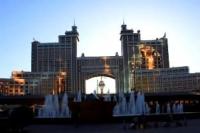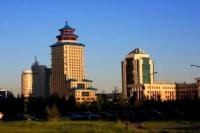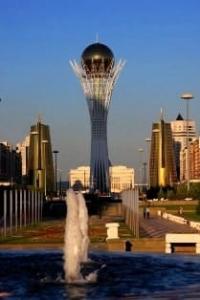Вы здесь
Excursion tour around Astana.



Individual one-day excursion routes across Astana.
«The person will through any tiess of space travel, except for their cost»
L.Djubridzh.
Season: year round.
Durationof excursion: 8 hours. From 09.00 till 17.00 o'clock.
Detailed program of an excursion trip on town Astana:
Tours Book in Astana.
Excursion on town visiting on town Astana: new national museum of history, constructed in June, 2014, visiting of the main symbol of Astana - complex «Baiterek» (105 meters in height), located on the area of Independence from height of tower «Baiterek» open panorama of an administrative centre of town, presidential palace up to shopping center-entertaining "Khan Shatyr", quay of Irtysh, visiting of park-map of the reduced spears of historical and natural monuments of Kazakhstan open-air “Atameken”, visiting of the main mosque of town «Nur-Astana», visiting of cathedral in honour of Uspeniy all-holy the mother of God , monument to victims of reprisals, visiting of an oceanarium in the entertaining center "Duman". Sightseeing tour on city.
Short information on the town of Astana.
The location of Kazakhstan capital began as nothing more than a ford across the Esil River (also Yesil, or Ishim in Russian), close to which a settlement called Akmola emerged part of a trading route that originated on a branch of the ancient Silk Road.
Akmola was used as a staging post by travellers, and trade in cattle and merchandise from China and the towns of the Central Asian steppe flourished. Scholars differ on whether the name refers to the nearby white barrows or graves (Ak Mola) or the "white abundance" of sheep's wool, cotton and mare's milk. Fresh excavations on nearby Lake Buzuk suggest a settlement called Ak-Zhol (White Track) during the time of the Desht-Kypchak from the X to XII centuries AD. In 1830, the Russians established a fortress here and named il Akmolinsk.
The stronghold at first served as a shelter for the Kazakhs against attacks from warlike neighbours such as the Kalmyks, Bashkirs and Cossacks, but later on its role changed to that of an outpost in Russia's campaign to colonize the nomadic steppe peoples. In 1838, it was captured and razed by Kenesary Kasymov, the leader of the largest Kazakh revolt against Russian colonialism.
But Russia's ambitions could not be held back; Akmolinsk was rebuilt, the settlement grew in size and importance and in 1862 it obtained city status. Mining became its predominant industry and it also became an important railway junction.
Note:
The author program is Alexander Petrov. Copying and introduction - from the sanction of the author .
Alexander Petrov
photos by:







